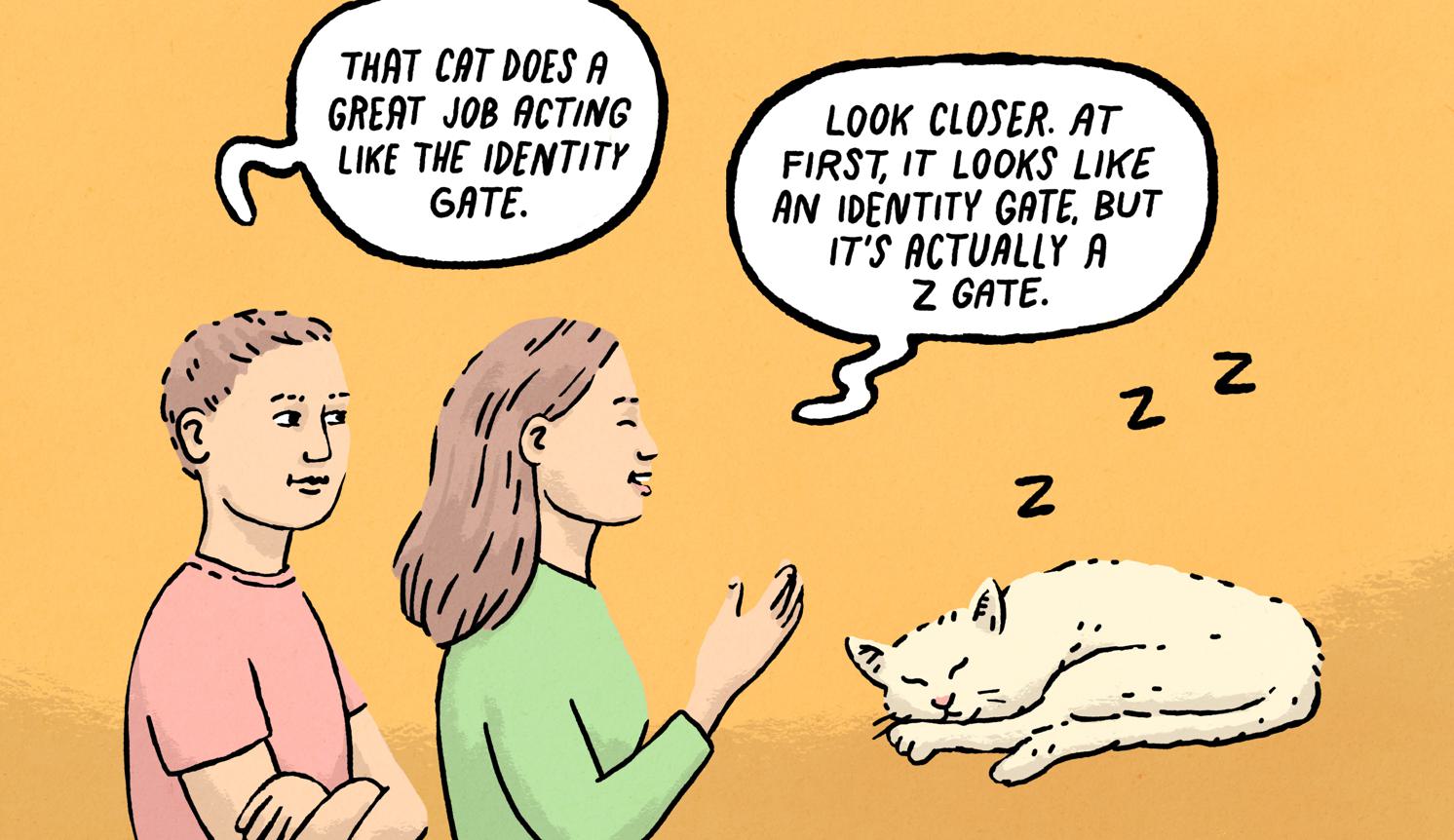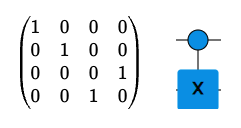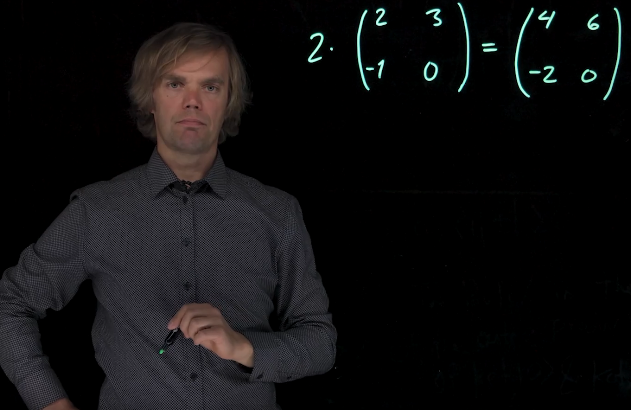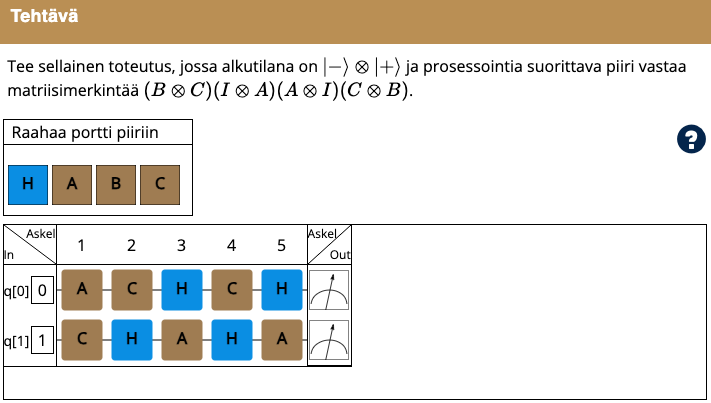The ABCs of Quantum Computing

What is it about?
Quantum information and quantum computation are pretty amazing, because quantum physics is a different kind of physics from everyday physics. But quantum things are still quite understandable when we use the language of mathematics.

Quantum systems behave differently from everyday physical systems and therefore quantum information is a different kind of information. Therefore, the rules for processing information are also different for quantum information. To understand the possibilities and limitations of information processing, it is worth learning about quantum information and quantum computing now that quantum computers are being built and improved.
The ABCs of Quantum Computing is an information package on quantum information and quantum computing for anyone interested. This Part B is the second in the Quantum Alphabet series. If you have not yet studied Part A, you should start there.
You can access the actual course material from the Document section in the top bar or from here. (The top bar appears when you log in to TIM.) This page contains general instructions on how to complete the course. If you already have a burning desire to learn quantum computing, you can jump to the document and return to the instructions when you feel you need them.
Note!
If you want a mark for the course, please register for the course before you start doing the assignments. Even if you don't care about a mark, by registering at you will have access to the full course material.
Once registered, your assignments will be saved and you can return to them later. The course is mainly open without registration, but the discussion board and the assignments in the last section require registration either through the University of Jyväskylä or the Open University. The course is free of charge when taken through the Open University.
-> course registration for University of Jyväskylä students in Sisu
-> course registration via the Open University
If you do not wish to register for the course, it is still recommended to log in to TIM. This will give you access to most of the course material and save your assignments.
-> You can log in to TIM here:
If you do not already have a TIM account, you can register a new account at the same point.
If you just want to browse the course material, that's fine too. But remember to log in to TIM and possibly register for the course at the point where you start to get interested in doing the assignments.
Who is the course intended for?
Part B is suitable for anyone who has completed Part A and wants to learn more about quantum computing. While Part A taught the basic concepts, Part B focuses on the mathematical notation needed for quantum computing and the basics of the mathematics that come up against quantum information. Practising this may require patience. This section of Quantum Algebra has also been designed to allow you to learn things by doing. An essential part of the course is the independent exercises, which progress from easy to more difficult. All you need for the prerequisites is the information in Part A.
What will you learn on the course?
The course focuses on the mathematical description of the basic setup of quantum gate computation. This allows for a more precise explanation of everything that was covered in Part A. More importantly, the concepts of quantum space, quantum gate, superposition and interleaving, which are essential to quantum computation, can now be properly defined.
After carefully going through Part B with all its exercises
- you understand the physical description of computation in terms of space, process and measurement
- you know how to denote cubit spaces as vectors
- you know how to denote cubit gates as matrices
- you know how to determine the outcome of a quantum gate computation
- you know the concepts of superposition and interleaving
In addition, Part B provides a basis for exploring the applications of quantum information, which will be explored in Part C.
Why should you learn maths?
In Part A, it was fun to do the problems by fiddling with a quantum gate simulator. Do we have to ruin everything nice with maths?

For example, the operation of the Z gate cannot be properly explained based on part A. In part B, it is fully described, and it is really easy to do. Also superposition and entangelement, which are the core concepts of quantum information, can now be satisfactorily defined.

The course has been designed to avoid big jumps. The exercises progress from easy to slightly more difficult.

As you learn more and more about the mathematical theory of quantum computing, you will find that you will become better and better at deducing the answers to the simulator problems. Mathematics provides the basis for understanding the theory of quantum computing.
How is the course delivered?
Part B is carried out in the same way as part A. In order to complete the course, you should study all the material in the course and in particular
test all the try-it-yourself boxes
answer all the questions (it is OK if you get them wrong)
complete all the exercises to the end
at the very end, reflect on what you have learned and summarise the main points in a few sentences
Click on Save after your activity whenever there is one in the box. This way your work is recorded. Saving also triggers a check of your answer. If your answer is wrong, then for the tasks, keep trying.
You can only answer a question once, so it's not worth going off on a wild guess. If in doubt, go back to the text and videos or the 'try it yourself' box associated with the question. Of course, it's OK to get it wrong, but then you know you need a refresher. The purpose of the questions is to give you a chance to test that you've understood the point.
You can do the exercises as many times as you need to. The exercises will give you practice on the topics covered in the course. Typically, the insight sought in an assignment requires experimentation. When a gate assignment comes up, fearlessly try all the gates and feeds it allows. As a general rule, you should complete the assignments as they come up. Of course, you can also leave a difficult assignment for later. To pass the course, all assignments must be completed.
You can check your performance at the end of the document, where you will find a list of unanswered questions and unfinished assignments.
Need help with your tasks?
If you need help with course assignments or want clarification on something, the right place to ask questions is the course discussion board. You can access the discussion board from the Discussion section in the top bar.
For most of the tasks, you can already find a hint by clicking on the green Quantum Owl logo below the task. If you get stuck, ask for advice in the discussion board. It is worth checking the previous discussion first, as someone else may have already asked the same question.
Who is responsible?
The teacher in charge is Teiko Heinosaari. For any questions regarding the course, please contact teachers at kvanttiaakkoset@jyu.fi. Any questions regarding exercises or other course material belong in the discussion board.
The course is also being examined
The course will be developed based on research. All course participants are invited to participate in the research, although participation is voluntary. You can refuse to participate in the research or withdraw at any time by contacting the course teacher. Participation or non-participation in the research will not affect the completion of the course, course requirements or assessment. The research will be conducted with the students' names masked.
The results of the study will be used to write theses and possibly research articles. No participant in the study can be identified from publications. For more information about the study, please contact Teiko Heinosaare.
How will the document be used?
The course material is one coherent document with text, videos, questions and exercises.
Instructions for watching videos:
- Before you start watching the video, read the accompanying text next to or below the video (depending on the device you are using).
- Speed allows you to adjust the speed of the video.
- Adv allows you to see the forward and backward jumps.
- You can turn on the subtitles by clicking on the three dots behind (Chrome) or the CC icon(Firefox).
- Hidefile allows you to hide the video view after watching it.
I will not do the course in one sitting. How do I remember where I am?
There are orange bars on the right-hand side of the page. The orange bar indicates a block that you have not yet read. Click on the orange bar to mark it as read. Click on ![]() to mark the document blocks up to the previous title level as read. If you don't like the bars, you can disable them completely by clicking on the wheel -> Mark all as read. However, bars are the preferred way to keep track of your progress, so you should at least try using them.
to mark the document blocks up to the previous title level as read. If you don't like the bars, you can disable them completely by clicking on the wheel -> Mark all as read. However, bars are the preferred way to keep track of your progress, so you should at least try using them.
I like to write myself notes in the margin. How can I do that?
Writing a note in the margin is called commenting in TIM. It is worth making commenting an active part of your learning. Here's how to do it:
- Click on the block and then on the edit menu
 . Select Comment/note.
. Select Comment/note. - Enter your comment in the Add comment form.
- Select whether the comment is visible to everyone(Everyone) or only to you(Just me).
- Save the comment by clicking on Save.
Note! Even if you write a comment for everyone, your name will not appear in it. You are welcome to share your thoughts with others.
If you have moved the editing menu to the left of the block, click on the block and the letter C (Comment) will appear on the right, click on the letter C
What is TIM?
The Alphabet of Quantum Computation uses TIM as its platform. TIM (The Interactive Material) is a versatile learning platform that allows the creation of interactive learning materials. TIM is open source software maintained by the Faculty of Information Technology at the University of Jyväskylä. More about TIM can be found here. The essential thing for this course is that this TIM document contains different interactive tasks. In addition, you can modify the view of the document to some extent to your liking. The image in the upper left corner of the book shows the table of contents.
These are the current permissions for this document; please modify if needed. You can always modify these permissions from the manage page.